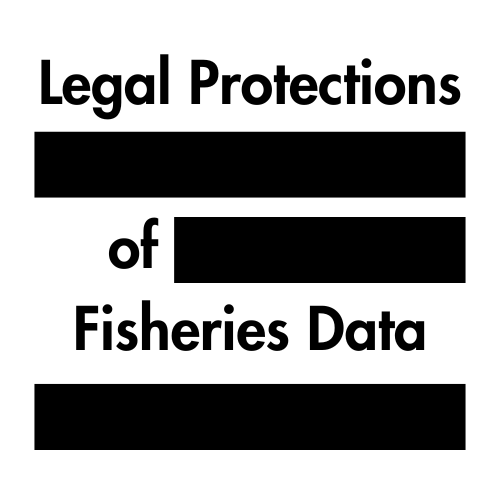To address the second question upfront: yes, it should. Both the fisheries and aquaculture sectors increasingly rely on technology that captures vast amounts of data, much of it now analysed using Artificial Intelligence (AI). For example, organisations like Global Fishing Watch utilise satellite data and machine learning to reveal patterns of activity that may help detect human rights abuses in the fishing industry. The reality is that what happens at sea is often difficult to observe, increasing risks for those working in fisheries. In aquaculture, the integration of digital tools and AI enables early detection of disease outbreaks and other indicators related to animal health and welfare.
Without AI, it would still be possible to collect data for management and oversight purposes. However, the sheer volume of information generated now, especially with emerging technologies like Electronic Monitoring (EM), makes it unrealistic to rely on manual analysis at the scale required to address key risks in seafood production. AI-enabled technologies and data analytics have the potential to drive much more responsible seafood practices, supporting safer, more transparent, and sustainable supply chains. Yet, the full impact of AI is unpredictable, and its adoption carries notable risks, which include not only ethical and social challenges but also significant environmental costs, such as the carbon footprint associated with large-scale data centres. Unsurprisingly, debates about AI governance and regulation are increasingly prominent on political and industry agendas.
What is AI law?
In 2025, global coherence in AI law or governance remains elusive, much like we have seen with the development of personal data protection regulations. Recent international meetings, such as the Paris AI Action Summit and the Munich Security Conference, have revealed fundamental disagreements over how to regulate artificial intelligence. These differences are not just about data and analytics; AI law addresses the entire ecosystem that powers intelligent systems, including software, hardware, semiconductors, and network infrastructures, all with their own security requirements.
A central challenge in regulating AI is that jurisdictions take sharply contrasting approaches: some (such as the European Union) seem to prioritise precaution, risk mitigation, and accountability; others (including the United States and China) appear more driven by acceleration, innovation, and broad utility. As a result, legal definitions, obligations, and enforcement mechanisms will likely vary widely from jurisdiction to jurisdiction.
If we try to summarise what “AI law” could look like at this point, it can be described as a set of legal frameworks, regulations, and policies that govern the development, deployment, and use of artificial intelligence systems. This may include security, transparency, ethics, and accountability. Today, there are no fully implemented national AI laws yet. Rather, many countries are in various stages of developing, proposing, or implementing AI legislation. The European Union’s Artificial Intelligence Act came into effect last year, but its applicability is phased gradually, with some compliance and oversight mechanisms only becoming effective by mid to late 2027. Some countries like South Korea have passed AI laws, with enforcement starting in 2026. In the United States several state-level AI-related laws exist, but there is no comprehensive federal AI law at this time.
Why Should the Seafood Sector care?
AI is reshaping both fisheries and aquaculture, but as we see regulations are only beginning to address its role, and sector-specific laws remain mostly silent on the technology’s direct impact.
Fisheries are using more AI tools to track catches, follow vessel movements, identify species, and monitor whether rules are being followed. However, most of the laws and policies that govern fisheries were written before digital technologies existed, so they rarely mention AI or even basic forms of digital monitoring. This isn’t unusual: many legal systems update slowly and we there is also uncertainty about how established legal protections like intellectual property laws or personal data protection law interacts with fisheries data collection and sharing. What this does mean is that there’s uncertainty for the people working with fisheries technologies: it’s unclear how new rules for AI will fit with older fisheries laws as well as the reality of fisheries management. Even as tools like electronic logbooks and automated catch certificates become more common, most regulations still focus on traditional management. This can make it hard to know who is responsible, how compliance will work, or what happens if an AI system makes a key decision instead of a person.
Aquaculture is a sector that seems to continuously be innovating on all different fronts, and AI-driven systems are no exception. Modern operations employ AI-driven cameras and sensors to monitoring water quality, identify fish health & welfare issues early, automate feeding systems for efficiency, and more closely track growth rates. Predictive analytics and machine learning allow managers to respond swiftly to emerging risks and optimize everyday operations. Much like fisheries law, laws regulating aquaculture have yet to catch up with the realities of AI integration, such as ethical issues arising from this new form of surveillance and decision-making. In the absence of AI legislation this isn’t a cause for concern yet, but it is expected to raise uncertainties in the near future.
So what now?
Staying ahead in this rapidly evolving landscape is crucial for organisations in the seafood sector to proactively engage with all relevant legal frameworks—not just fisheries or aquaculture laws but also emerging AI and data protection regulations. Waiting to react to issues as they arise can expose your operations to legal risks, compliance gaps, and reputational damage.
For tailored advice and support on navigating data protection and related regulations in the seafood sector, please contact: eva@naturaljustice.nl.


Leave a Reply